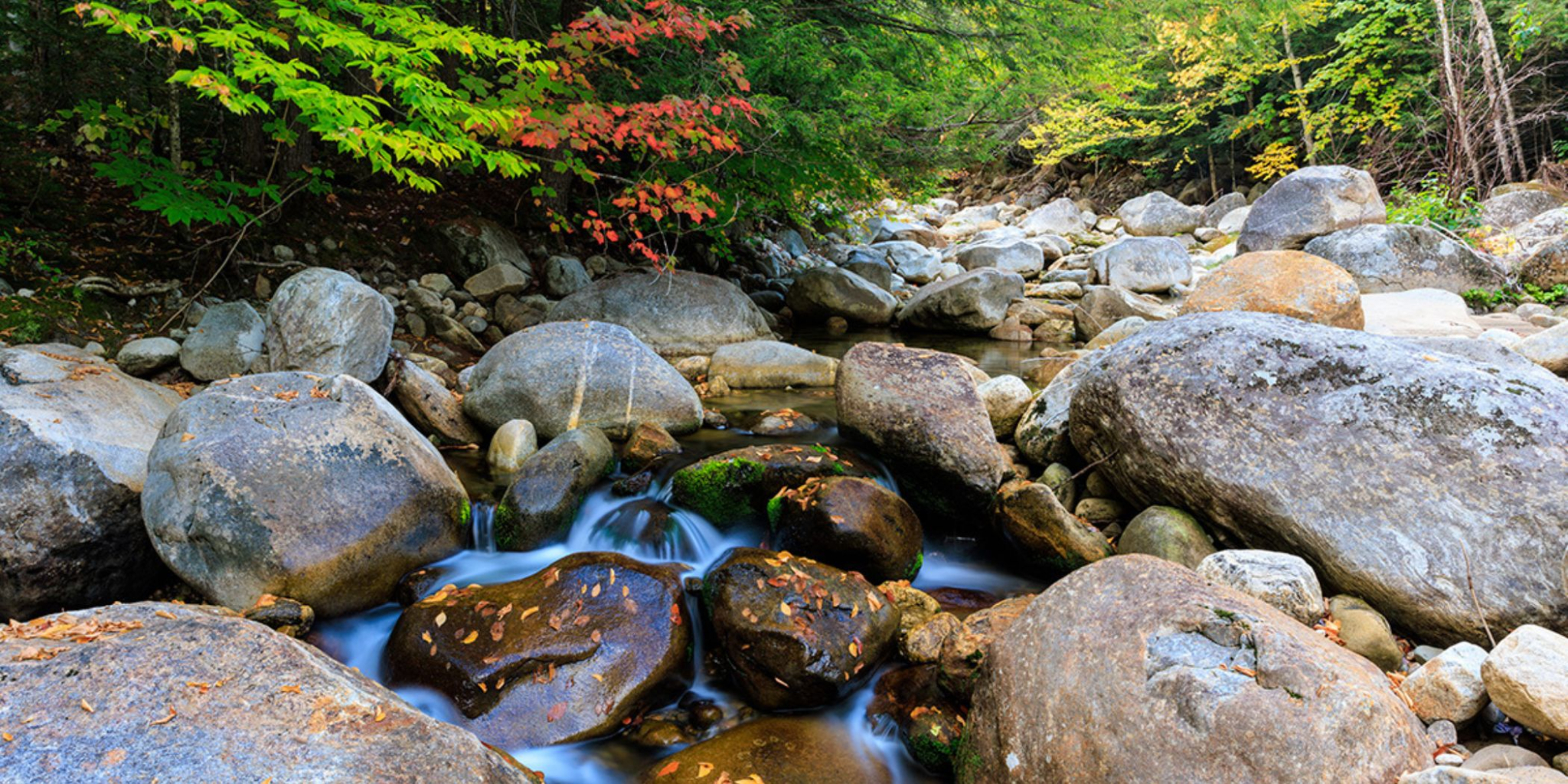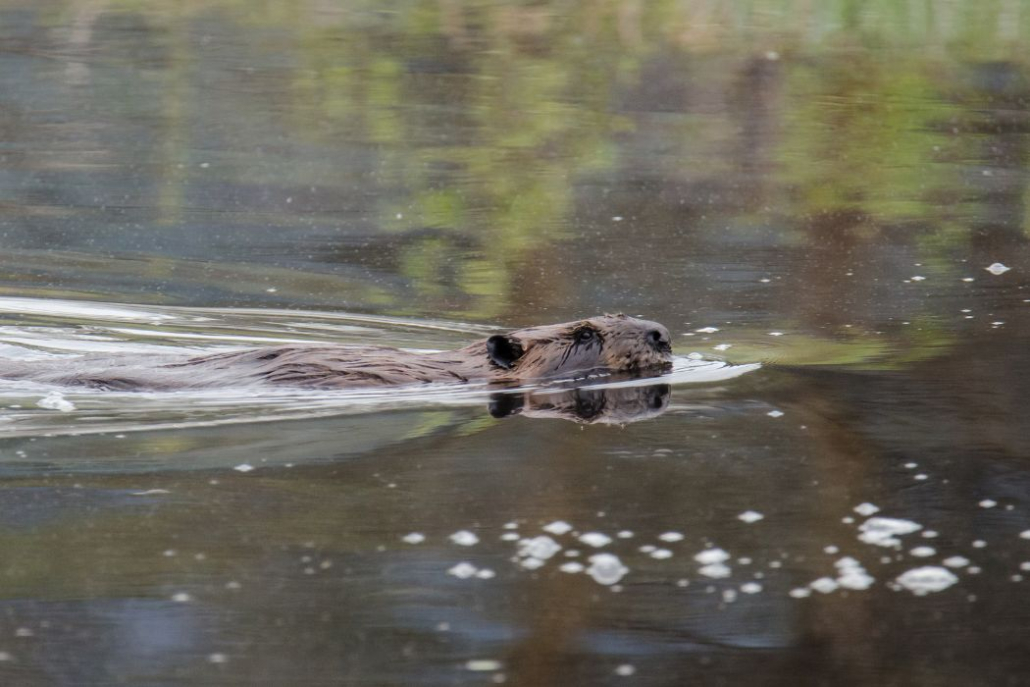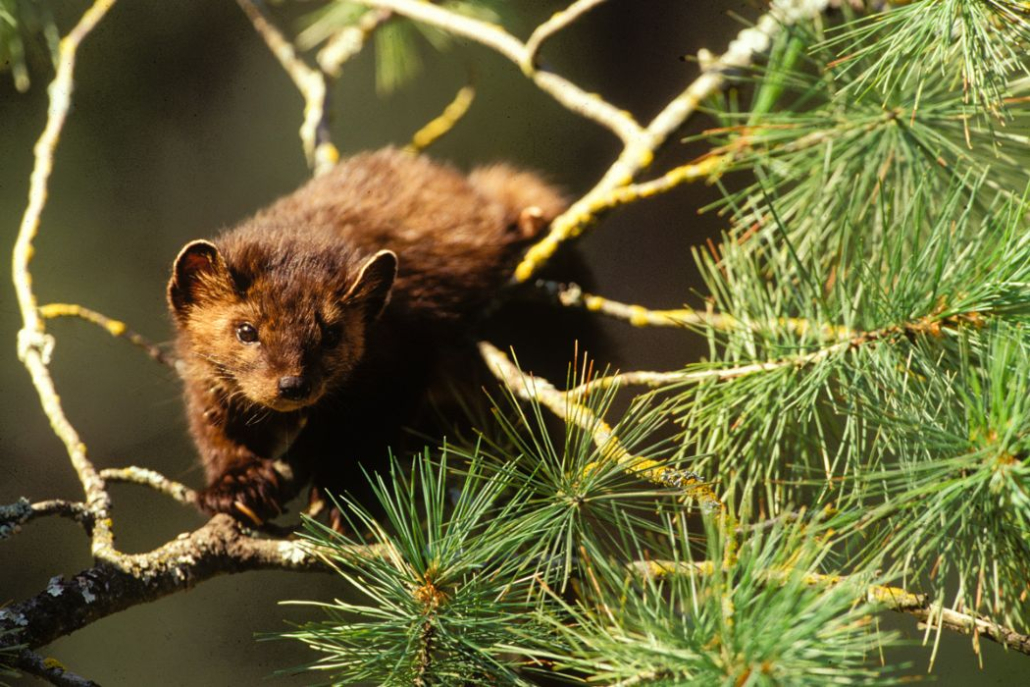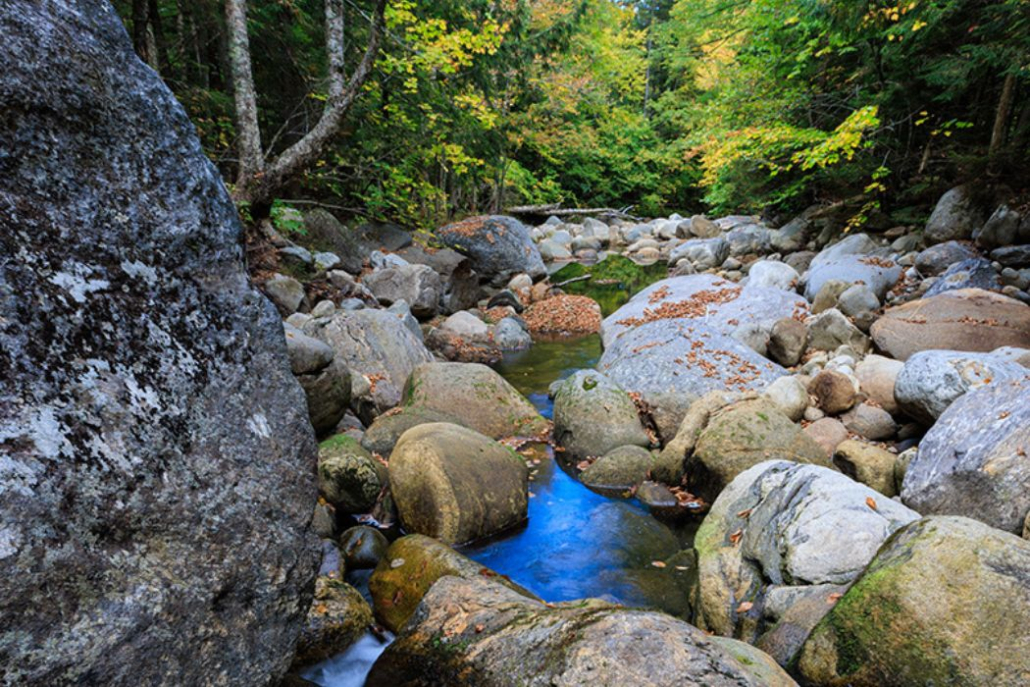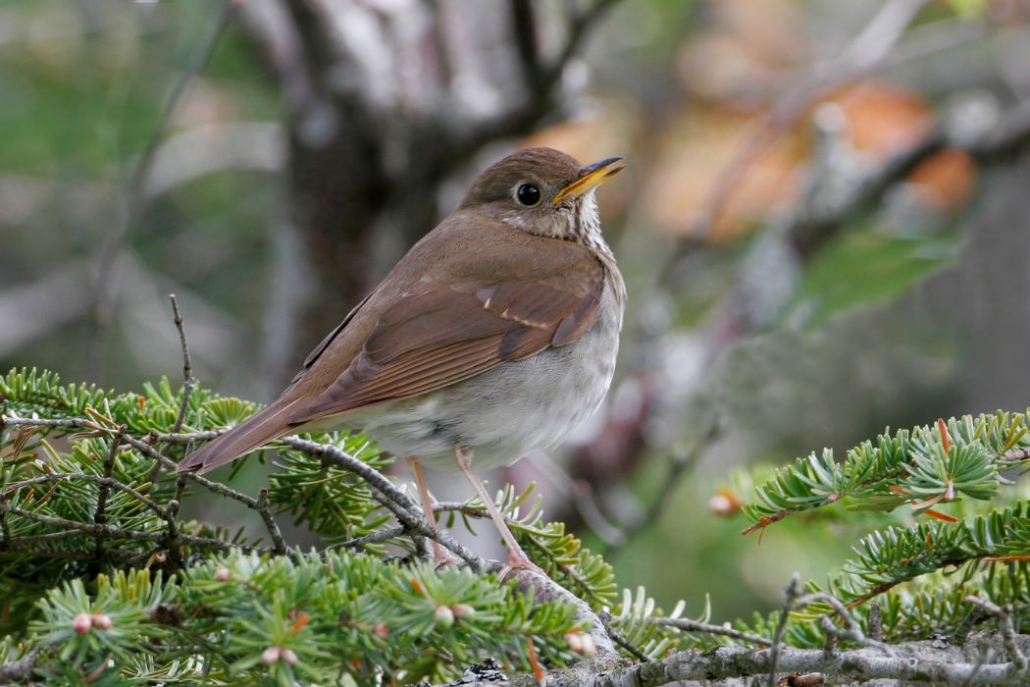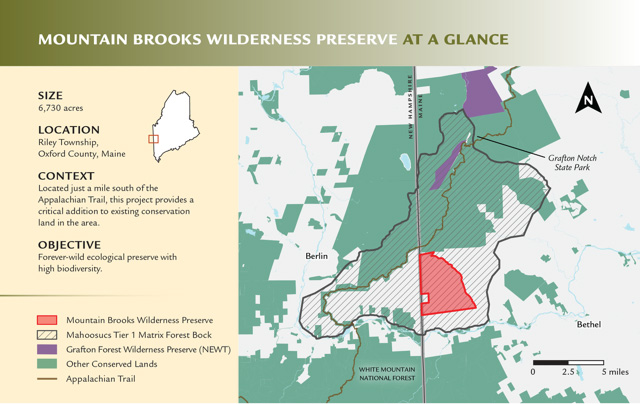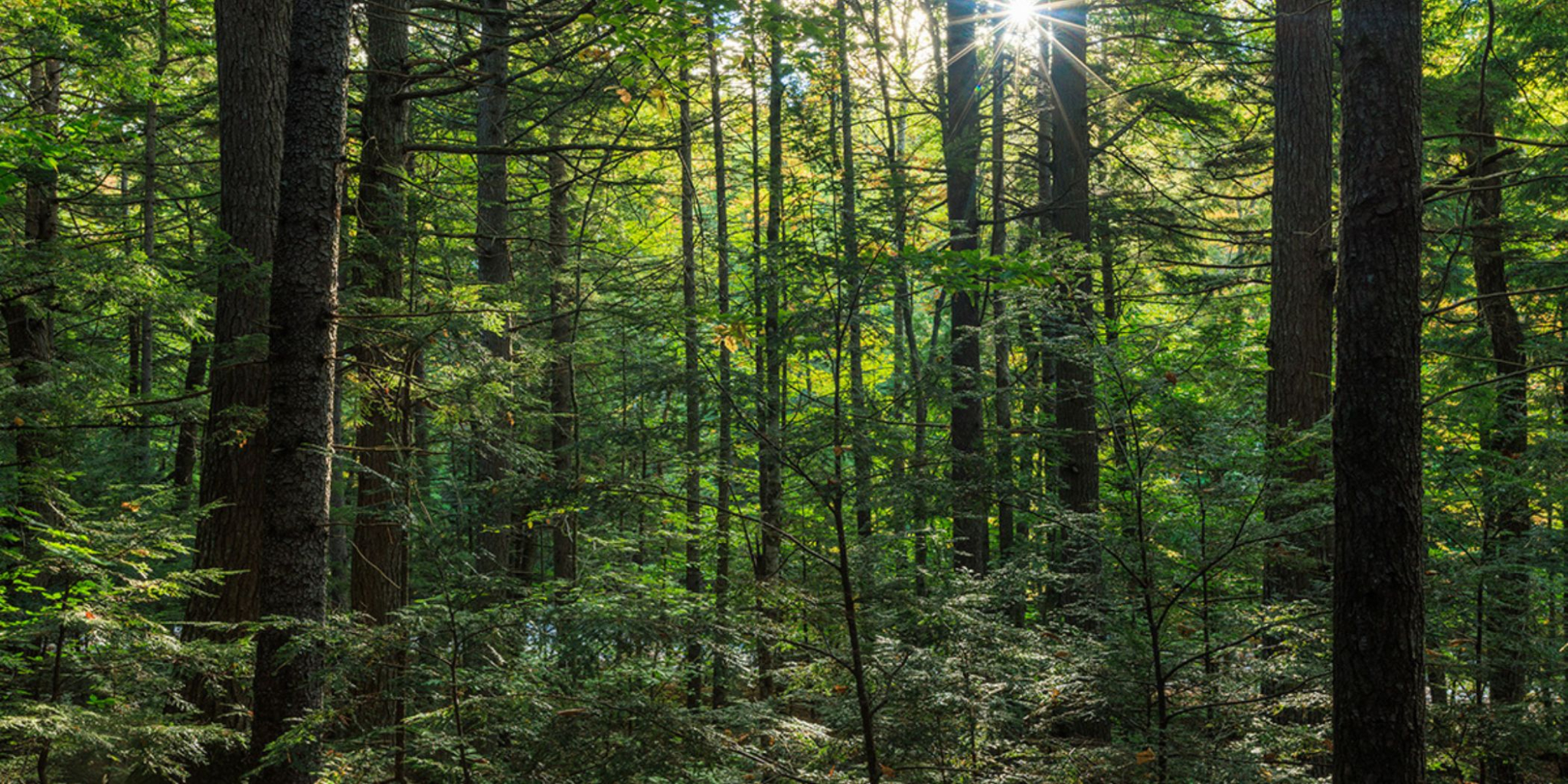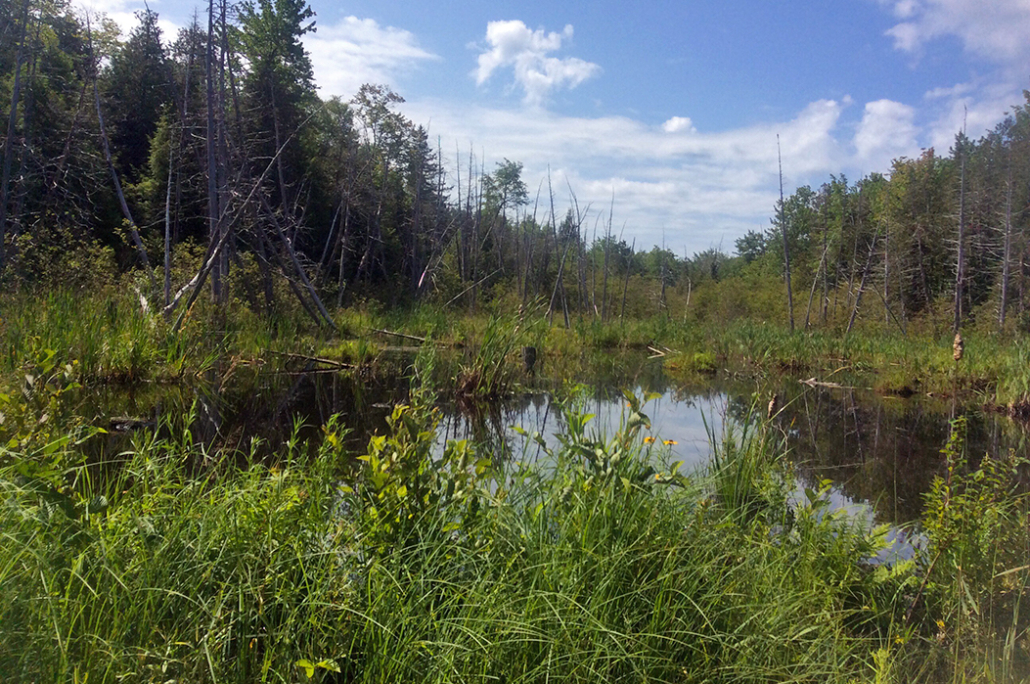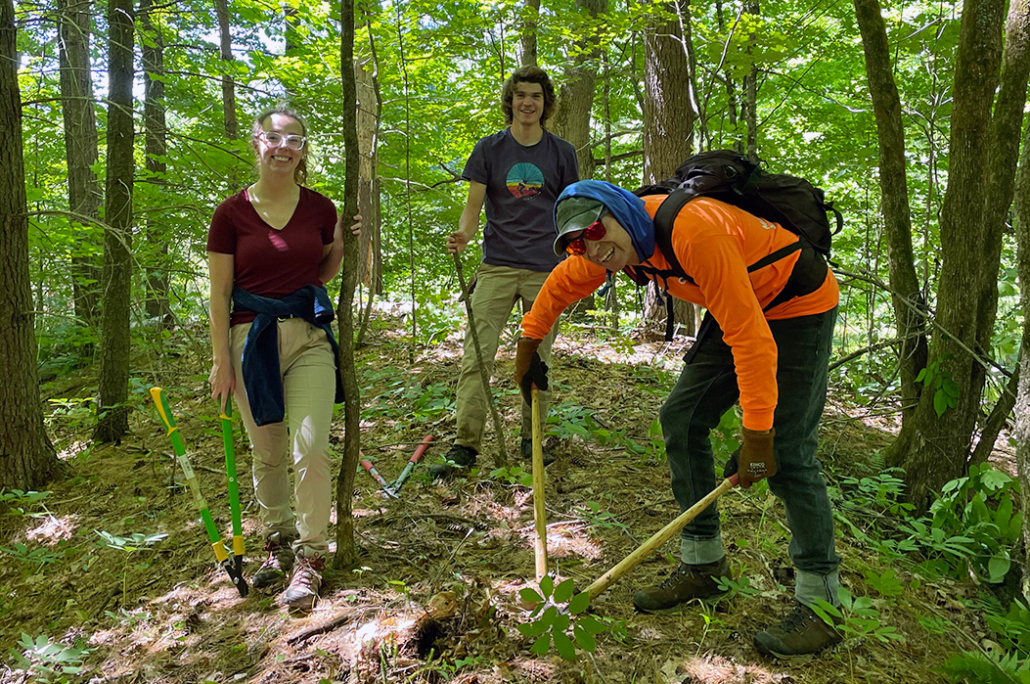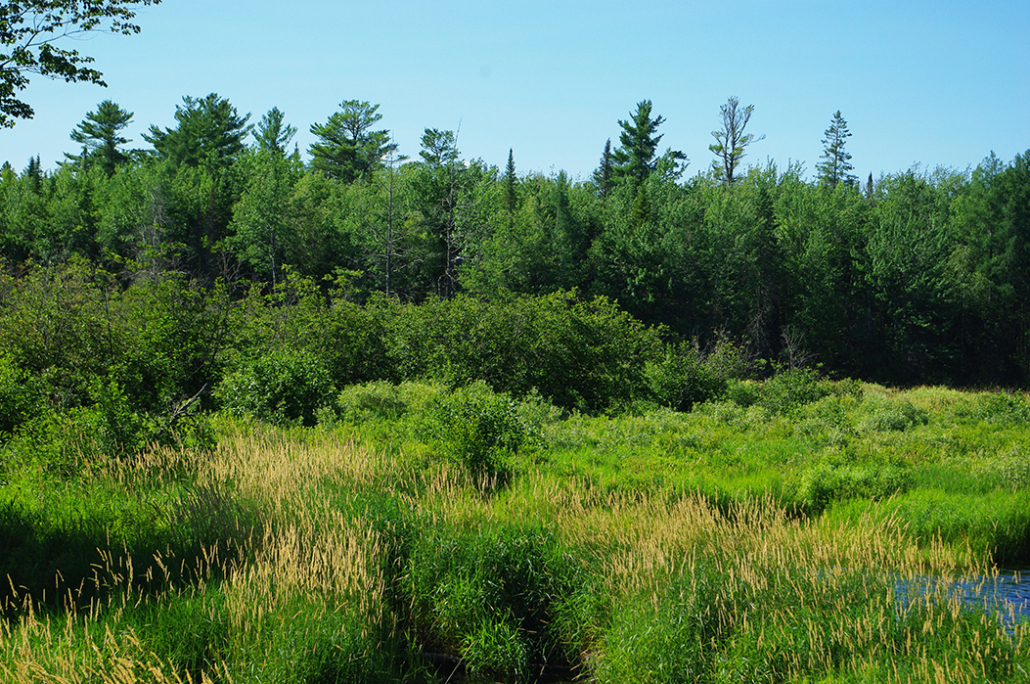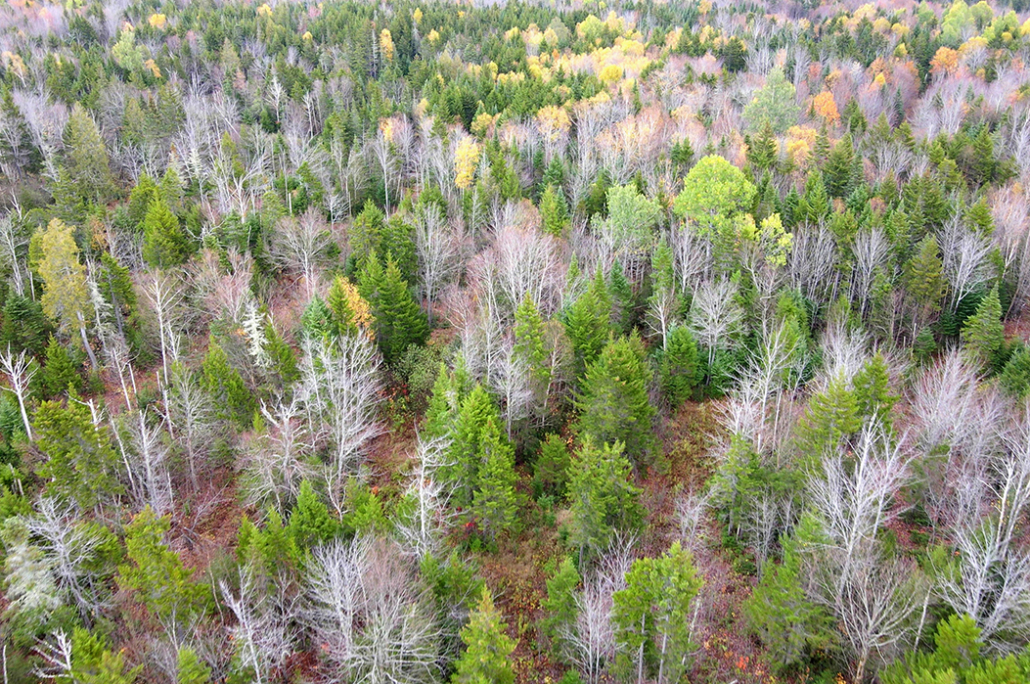Restoring a mountain home for wildlife
More than 2,000 vertical feet separate the highest and lowest points of Mountain Brooks Wilderness Preserve, a 6,730-acre property benefitting from forever-wild protection after decades of active forest management. Situated along Maine’s border with New Hampshire, the Preserve encompasses several peaks in the White Mountains’ Mahoosuc Range, as well as four major waterways and various smaller brooks and streams. Together, these diverse landscape features provide critical habitat for threatened and endangered species, while bolstering a vital wildlife corridor.
Amid the property’s dramatic slopes are exemplary natural communities. Mountain Brooks is mostly Northern Hardwood Forest, characterized by a mix of hardwood and softwood tree species. The Maine Natural Areas Program has also mapped approximately 200 acres of Subalpine Fir Forest on the property’s higher points. In these areas, high elevation and cold-loving species like balsam fir, paper birch, and red spruce abound, while wood fern, bluebead lily, and starflower spread across the forest floor. To the southeast one can find about 82 acres of Spruce-Pine Woodland, where balsam fir, black spruce, northern white cedar, red spruce, and white pine comingle atop carpets of sheep laurel, lowbush blueberry, bracken fern, and shadbush.
Complementing these diverse forests are plentiful water features. The Preserve’s primary watercourse is Lary Brook, whose cold, clear waters destined for the Androscoggin River are home to native brook trout. About two-thirds of the Preserve and additional lands to its west drain into Lary Brook, while the southeastern portion of the property drains into another prominent waterway, Twitchell Brook. Both of these, as well as French and Peabody Brooks, are fed by a multitude of smaller streams and creeks. A wetland in the northeastern portion of the Preserve is home to a healthy beaver population, as are other sections of the Preserve.


